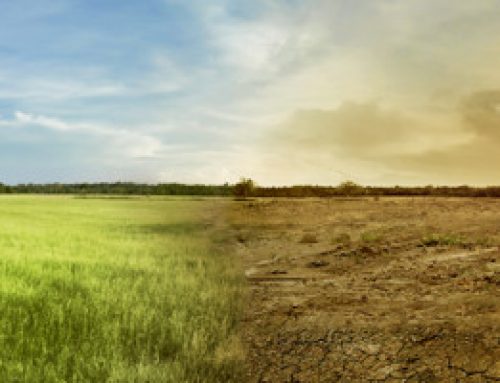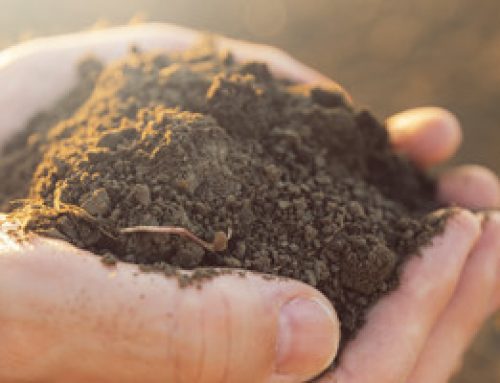Quality
The Niagara Peninsula Source Protection Committee provides the following information in their 2017 Annual Progress Report:
There are six municipal water treatment plants in the Niagara Region, with surface water intakes which supply over 80% of the population. There are no municipal wells. The six water treatment plants that supply municipal drinking water to residents are: Welland, DeCew Falls, Port Colborne, Niagara Falls, Grimsby and Rosehill (Fort Erie). Only Grimsby is on Lake Ontario, the remainder are on Lake Erie or a connecting channel (Welland Canal or Niagara River).
Vulnerable areas known as Intake Protection Zones (IPZs) were delineated around each municipal water treatment plant intake. The source protection program focused on drinking water threats within these IPZs. Existing and potential future threats within these IPZs were ranked and significant threats identified for policy action under the Source Protection Plan. The Source Protection Committee chose also to include transportation, storage and handling of diesel and gasoline along the Welland Canal as significant drinking water threats requiring addressing under the Source Protection Plan.
The Source Protection Plan contains policies to address significant drinking water threats for four water treatment plants, Welland, DeCew Falls, Port Colborne and Niagara Falls. No significant drinking water threats were determined for Grimsby or Rosehill (Fort Erie).
Source: Niagara Peninsula Source Protection Annual Progress Report, April 26, 2017.
Retrieved from: http://www.niagaraknowledgeexchange.com/resources-publications/source-protection-annual-progress-report/
The Ontario Ministry of Environment and Climate Change provides a Source Water Protection Information Atlas tool
Source: Niagara Peninsula Source Protection Authority
Retrieved from: http://www.sourceprotection-niagara.ca/ and https://www.gisapplication.lrc.gov.on.ca/SourceWaterProtection/Index.html?site=SourceWaterProtection&viewer=SWPViewer&locale=en-US
In November, 2016 Niagara Region committed $1 million in support of implementing the Bay Beach master plan in Fort Erie ($850,000) and the Centennial Gardens revitalization project in St. Catharines ($150,000). The funding is provided through the Waterfront Investment Program, a cost-sharing initiative with local municipalities and the Niagara Peninsula Conservation Authority.
Source: Niagara Region
Retrieved from: https://www.niagararegion.ca/council/Council%20Documents/2016/council-minutes-nov-17-2016.pdf
Emergency Management Plans in Niagara and Protection of Water Quality
The Niagara Region Emergency Management Plan defines the structure to co-ordinate a multiple-agency emergency response to any major threat to life, health, safety and welfare of Niagara residents and visitors.
The following response goals are applied to all emergency situations. In order of priority they are:
1) Provide for the health and safety of all responders
2) Save lives
3) Reduce suffering
4) Protect public health
5) Protect critical infrastructure
6) Protect property
7) Protect the environment
8) Reduce economic and social losses
The provincial Emergency Management and Civil Protection Act, R.S.O.1990, c.E.9 requires municipalities to develop, implement and maintain an emergency management program and adopt it with a by-law. An emergency management program must consist of:
- An emergency plan
- Training programs and exercises for employees of municipalities and other persons with respect to the provision of required services and procedures to be followed in emergency response and recovery activities
- Public education on risks to public safety and on public preparedness for emergencies; and
- Any other element required for municipalities in standards of emergency management programs that may be developed by the Ontario Fire Marshall and Emergency Management Division of the Ministry of Community Safety and Correctional Services.
Some of these Emergency Response Plan policies are directed to municipal bodies to prevent fuel related threats from negatively impacting water treatment plants along the Welland Canal.
Niagara Region Emergency Management Plan and plans for 11 of the 12 lower-tier municipalities are available at the link below:
Source: Niagara Region
Retrieved from: https://www.niagararegion.ca/government/health/emo/plans.aspx and https://www.niagararegion.ca/government/health/emo/pdf/emergency-managment-plan.pdf
In the 3 years from 2014 to 2016, Niagara Region’s six water treatment facilities obtained a 100% rating from the Ministry of Environment and Climate Change (MOECC) during inspections. The MOECC inspects water treatment facilities annually to ensure compliance with professional regulations.
Source: Niagara Region; and Niagara Region Water Quality Reports
Retrieved from: http://www.niagararegion.ca/news/article.aspx?news=716&t=Niagara%e2%80%99s+drinking+water+treatment+plants+earn+A%2b+from+Province and https://www.niagararegion.ca/living/water/water-quality-reports/default.aspx
The Niagara Peninsula Conservation Authority (NPCA) was established on April 30, 1959, under the Conservation Authorities Act, and serves approximately half a million people in the Niagara Peninsula Watershed. The watershed encompasses the entire Niagara Region and portions of the City of Hamilton and Haldimand County. The NPCA manages the impact of human activities, urban growth and rural activities on the watershed.
Source: Niagara Peninsula Conservation Authority (NPCA)
Retrieved from: https://npca.ca/
The Niagara River Remedial Action Plan (RAP) Group reports that over the past 50 years, major clean-up efforts have reduced discharges of pollution and toxic chemicals. The river has been successfully remediated from one of the most degraded places in North America to one of improved health recognized for its contribution to global biodiversity. The goal is to see the Niagara River (Ontario) delisted as a Great Lakes Water Quality Agreement Area of Concern by December, 2019.
Source: Niagara River Remedial Action Plan Group
Retrieved from: http://ourniagarariver.ca/
The following table is from the Niagara Open Data portal. The table, “identifies municipal drains that have been classified as fish habitat by the Provincial Ministry of Natural Resources.”
| CNH_ID | MunDrainNA | Shape.len |
| 14672 | Carter Drain | 529.679 |
| 14673 | Carter Drain | 1190.13 |
| 14746 | Point Abino Drain | 9.435762 |
| 14747 | Point Abino Drain | 390.6786 |
| 14748 | Four Mile Creek Drain 5 | 3.604997 |
| 14749 | Allanport Drain | 177.8298 |
| 14750 | Allanport Drain | 142.9645 |
| 14751 | Kupitz Drain | 4.234348 |
| 14752 | C.S.W. Drain 20 | 383.6463 |
| 14753 | Kupitz Drain | 705.9813 |
| 14754 | Swayze Drain West Branch | 1101.902 |
| 14755 | Fulton Road Drain | 141.9324 |
| 14756 | Disher Drain | 373.0809 |
| 14757 | Kupitz Drain | 961.335 |
| 14758 | Lowrey Drain | 954.3538 |
| 14759 | Van Buen Drain | 170.7686 |
| 14760 | Sloma Drain | 1131.793 |
| 14761 | Dr. Cobb Drain | 724.8301 |
| 14762 | Dr. Cobb Drain | 339.7535 |
| 14763 | Kupitz Drain | 911.0377 |
| 14764 | C.S.W. Drain 20 | 219.9202 |
Source: Niagara Region Open Data portal. (2016, February 16). Core Natural Heritage Municipal Drains [Data file].
Retrieved from https://niagaraopendata.ca/dataset/cnh-municipal-drain
In 2017, the International Joint Commission hosted a workshop attended by 33 experts from Canada and the United States representing government, industry, non-profit organizations, and academia. Based on this information, four preliminary recommendations were developed for governments in addressing the concerns posted by the presence of microplastics in the Great Lakes. Microplastics generally refer to particles 5mm or less in size, and there is concern about their potential impacts on environmental or human health.
- Develop a binational plan to prevent microplastics from entering the Great Lakes using a combination of approaches and tools, including science and research, policy, market-based instruments, and education and outreach.
- Joint monitoring, science and research initiatives for a binational assessment of microplastics in the Great Lakes to inform decision-making by:
- Developing and/or adopting standardized sampling and analytical methods
- Developing a transport model to determine the sources and fate of microplastics
- Assessing potential ecological and human health impacts
- Investing in research for source reduction, improved recycling, and reduced release of plastic pollution
- Adopt policies that promote life-cycle responsibility of producers to support state, provincial, and federal policies to effectively reduce plastic pollution. Funding should be provided to compare and analyze existing programs and policies for the reduction and prevention of plastics and microplastics in the Great Lakes, and promote those that are good models for plastics and waste management.
- Provide funding support for local programs and organizations that provide education and outreach to promote the reduction and prevention of plastics/microplastics in the Great Lakes.
Source: “International Joint Commission’s Recommendations on Microplastics in the Great Lakes”. International Joint Commission. February 2017.
Retrieved from: http://ijc.org/files/tinymce/uploaded/Publications/IJC_Microplastics_GL.pdf
The International Joint Commission has also developed a set of recommendations for the governments of Canada and the United States to address polybrominated diphenyl ethers (PBDEs) in the Great Lakes. PBDEs have been widely used as flame retardants since the 1970s and have been added to a wide range of commercial and consumer products. They have shown to have adverse impacts on the environment and wildlife and have been identified as persistent, toxic, and bioaccumulative. Adverse impacts on wildlife include increased mortality rates, malformations, and thyroid system and metabolic impairment. PBDEs are present in the sediment, water, air, wildlife, and humans of all five Great Lakes.
- Now that PBDEs have been designated as a Chemical of Mutual Concern under the Great Lakes Water Quality Agreement, a binational strategy to reduce these chemicals in the Great Lakes basin should be developed and implemented before the end of 2017.
- The entire basin should be protected by equally effective restrictions on the manufacture, use, and sale of PBDEs and PBDE-containing products. As part of the federal governments’ strategy for addressing PBDEs, they should assess the various regulatory and non-regulatory methods that they can use to protect the basin from the PBDE contamination and ensure that equally protective actions are taken throughout the basin.
- The federal governments should develop a plan for reducing and eliminating potential releases of PBDEs in products during the recycling and disposal stages. This plan should be developed in cooperation with a wide range of stakeholders.
- The federal governments should develop and promote guidance for industry, municipalities and the public – incorporating best practices – for product end-of-life management, such as recycling and disposal, that provides equal protections in all parts of the Great Lakes basin.
- The responsible governments (federal, provincial and state) should develop and implement Extended Producer Responsibility programs throughout the basin to require industries to be responsible for their products containing PBDEs after use and to ensure that they are properly recycled and disposed, to be undertaken in two phases.
- Phase 1: electronics, appliances, carpets, mattresses, and furniture
- Phase 2: construction, renovation, and demolition wastes
- A) The federal, provincial, and state governments should develop and distribute guidance for industry on methods to assess PBDE substitutes and encourage use of methods for addressing flammability concerns that are less reliant on chemicals or avoid chemical use altogether.
- B) The federal governments should require industry, in advance of making a chemical substitution, to demonstrate to governments the basis for their decision and to obtain government approval for the substitution.
- A) The federal governments should establish a product registry identifying which products, generated within and imported into the basin, contain PBDEs and how much they contain. This will help determine which products need the most disposal control, and will help governments, industry and the public make wise, informed decisions in their purchasing.
- B) The responsible government jurisdictions (federal, provincial and state) should ensure that research and monitoring is carried out to improve the understanding of the extent to which and how PBDEs are released to the environment in the recycling and disposal stages.
- C) The responsible government jurisdictions (federal, provincial and state) should continue and increase monitoring of PBDEs in environmental media (water, sediment, air, biota [fish, gull eggs, etc.]) in order to assess effectiveness of policies aimed at reducing PBDEs in the environment.
Source: “Polybrominated Diphenyl Ethers (PBDEs) in the Great Lakes Basin: Reducing Risks to Human Health and the Environment.” International Joint Commission, November 2016. Retrieved from: http://ijc.org/files/publications/Polybrominated_Diphenyl_Ethers_Great_Lakes_EN.PDF
Atmospheric deposition has been recognized as a major pathway of persistent, bioaccumulative substances (PBTs) entering the Great Lakes since the 1970s. While Canada and the US acted on this by providing for monitoring of atmospheric deposition of these substances through the Great Lakes Water Quality Agreement, the Great Lakes region lacks an adequately and sustainably funded, geographically diverse, and consistently maintained mercury atmospheric deposition monitoring network.
Mercury levels in some fish and wildlife species in some locations of the Great Lakes Basin are increasing, despite dramatic reductions in local and regional air emissions of mercury. Mercury contamination is concerning because of its effect on human health. For fetuses, infants, and children, the primary health effect is impaired neurological development. Impacts on cognitive thinking, memory, attention, language, and fine motor and visual spatial skills have been seen in children exposed in the womb.
Source: “Atmospheric Deposition of Mercury in the Great Lakes Basin.” International Joint Commission, December 2015.
Retrieved from: http://ijc.org/files/tinymce/uploaded/documents/Atmospheric-Deposition-of-Mercury-in-the-Great-Lakes-Basin-December-2015.pdf
Quantity
In 2015, Niagara Falls City Council authorized staff to participate in a research partnership with the University of Waterloo for a study on “Water, Energy and Affordability: Key drivers in the financially sustainable management of urban water infrastructure”.
Source: University of Waterloo
Retrieved from: https://uwaterloo.ca/school-of-accounting-and-finance/saf-professor-serves-sustainable-water-management-project
Researchers at the Environmental Sustainability Research Centre at Brock University published a 2016 report on attitudes to water governance. The Niagara River watershed was used for the case study. The report cites findings of an online survey:
- When given the choice, the majority of people agreed that water governance should be government-led, and/or collaboratively governed by citizens and the government. This preference was true across gender, racial, age, education, Canadian-American nationality, and other demographic groups.
- The most common attitude towards water governance is pragmatism – even when asked to be creative, respondents preferred water governance to take a pragmatic approach and work within institutional constraints.
Source: Baird et al., 2016. Contemporary Water Governance: Navigating Crisis Response and Institutional Constraints through Pragmatism.
Retrieved from: http://www.mdpi.com/2073-4441/8/6/224/htm
Research conducted by the Intact Centre on Climate Adaptation finds that Canada has significant room for improvement in the area of flood preparedness and flood risk mitigation, which is expected to have negative implications for pension funds, which carry real estate and infrastructure assets, energy stocks, and municipal bonds.
Source: Investment Review, February 3, 2017.
Retrieved from: http://www.investmentreview.com/analysis-research/canada-scores-a-c-minus-for-flood-preparedness-7421
The Lake Erie-Niagara River Ice Boom has been installed each fall since 1964 to accelerate the formation and stabilization of the natural ice arch, and reduce the frequency and duration of ice runs from Lake Erie into the Niagara River. By reducing these ice runs, or ice floating down the river, the boom diminishes the probability of large-scale ice blockages. These blockages in the river can cause flooding, damage to shoreline property, and a reduction in flow of water to the hydro-electric power plant intakes down the river near Niagara Falls.
Source: International Joint Commission
Retrieved from: http://www.ijc.org/en_/blog/2016/04/20/all_about_lake_erie_niagara_ice_boom/?platform=hootsuite&utm_content=buffer20d82&utm_medium=social&utm_source=twitter.com&utm_campaign=buffer








